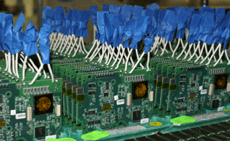Whether you are looking to buy or sell custom electronics, it is important to have a clear understanding of attributes to the cost of a printed circuit board assembly (PCBA). Some of the biggest cost drivers include, but are not limited to, the following:
1. Technology Used
- Surface mount (SMT)
- Through hole
- Mixed (both)
2. Part Locations and Spacing
- Top side only
- Double sided (top and bottom)
3. Total Number of Placements on the Assembly
4. Package Size of the Components Required
- 1206
- 0804
- 0603
- 0402
- 0201
- Smaller?
5. Packaging of the Components
- Reel
- Tube
- Tray
- Cut strip with or without a leader
- Loose in a bag
6. Processes Required
- SMT pick and place
- Through hole auto insertion
- Through hole slide line
- Wave solder
- Automated Optical Inspection (AOI)
- X-ray
- Selective solder
- Hand solder
- General assembly
7. Quantity and Batch Size(s)
8. Special Part Preparation Requirements (i.e. lead length, height min/max, spacing)
9. Total Cost of the Complete Bill of Materials (BOM)
10. Bare Board (PCB) Layer Count and Material Used
11. Coating Requirements (if any)
- Spray or brush
- Number of coats
- Coverage tolerances
- Specified keep out areas
12. Potting Requirements (if any)
13. Assembly Compliance Requirements
- RoHS (lead free)
- Non-RoHS (leaded)
- IPC-A-610D Class I, II or III
- ITAR
14. Test Requirements
- Power up
- Functional
- In Circuit Test (ICT)
- Thermal cycling
- No test (visual inspection only)
15. Shipping Requirements
- Standard ESD (electrostatic discharge) bags
- Non-standard/special containers
16. Delivery
- Standard turn with no expedite requirements
- Expedited quick turn (labor and material costs are affected)
The most common instances are when parts are located on both sides of a board when the real estate is available to have them on one side, or when a new technology (through hole or SMT) is introduced into a design when it’s not necessary. Another common issue is when an assembly is quoted using customer supplied parts for machine placement (cut tape with leaders, reels, tubes, trays), but end up being provided in other forms (cut tape with no leaders, loose in bags). As a contract manufacturer it’s essential to communicate all of the circumstances that add cost, so there are no surprises.
 As a contract manufacturer, RBB may not always be involved in the initial design of the custom electronics we end up building. However, the manufacturing feedback we provide to our customers has led to cost reductions and overall improvements of their design. The most successful projects are those where the engineers at our customer are engaged with RBB manufacturing engineering up front. Trust and open communication have altered many designs for the better over the years that I’ve been with RBB.
As a contract manufacturer, RBB may not always be involved in the initial design of the custom electronics we end up building. However, the manufacturing feedback we provide to our customers has led to cost reductions and overall improvements of their design. The most successful projects are those where the engineers at our customer are engaged with RBB manufacturing engineering up front. Trust and open communication have altered many designs for the better over the years that I’ve been with RBB.
When taking all of the different aspects of a printed circuit board assembly into consideration, it is clear that bridging the gap between design engineering and the goals for purchasing completed units becomes all the more critical. The application of the printed circuit board assembly often drives its design and layout, but understanding what has the potential to add cost can only help in the end!






